Aethiessa mesopotamica Burmeister, 1842
Aethiessa mesopotamica Burmeister, 1842 - Handbuch der Entomologie. Dritter Band. Coleoptera Lamellicornia Melitophila. Berlin: Theod. Chr. Chr. Fried. Enslin: p. 414.
Aethiessa bagdadensis Burmeister, 1842 - Handbuch der Entomologie. Dritter Band. Coleoptera Lamellicornia Melitophila. Berlin: Theod. Chr. Chr. Fried. Enslin: p. 414. (synonymous)
Aethiessa rugipennis Burmeister, 1842 - Handbuch der Entomologie. Dritter Band. Coleoptera Lamellicornia Melitophila. Berlin: Theod. Chr. Chr. Fried. Enslin: p. 417.
Aethiessa mesopotamica var. albocincta Kraatz, 1884 - Neue kafer-Arten aus Malatia im sudlichen kleineasien. Deutsche Entomologische zeitschrift, 28, p.231 (maera Reitter, 1899, synonymous)
French
Cette cetoine (13-24 mm) se caracterise par un dessus noir luisant avec un leger reflet bleu ou vert et avec des taches blanches en nombre et extension variable sur les elytres, le pygidium et les cotes du pronotum. Ces taches blanches pouvent etre absentes ou bien tres developpees comme chez la variete albocincta Kraatz qui a les cotes du pronotum largement blancs, des nombreuses taches sur les elytres et le pygidium blanc. Le bord anterieur du clypeus est echancre et le metasternum a un profond sillon longitudinal. Le pygidium des femelles a une depression oblique de chaque cote et enfin les genoux ont une tache blanche feutree au niveau des condyles.
La forme typique est presente en Israel, Palestine, Liban, Syrie du Sud et Irak.
La sous espece A.mesopotamica rugipennis Burmeister, longtemps consideree comme espece distincte, est le plus souvent sans taches blanches sur le dessus, sauf parfois sur le pygidium et l’apex des elytres. Les parameres du male sont nettement plus effiles que ceux de la forme typique et le clypeus est etroitement releve au sommet, alors que chez la forme typique le clypeus est largement releve. Elle est presente en Syrie septentrionale, Anatolie orientale, Caucase et Iran.
L’imago frequente tous types de biotopes allant de zones cotieres jusqu’en altitude elevee (Mt Anti-Liban), aussi dans les zones cultivees, et se rencontre d’avril a juin selon l’aridite et l’altitude. On peut l’observer surtout sur des chardons divers (Onopordun et Cirsium), des fois tres abondante.
L’ethologie de la cetoine est mal connue, il semble qu’elle passe ses stades larvaires dans des biotopes tres secs, dans la terre a la faveur d’infractuosites ou sous des pierres, et dans un milieu amande d’excrements de caprins (chevres et moutons).
English
This Cetoniinae (13-24 mm of lenght) is characterized by a dorsal surface black shining with a light blue or green reflection and with white spots variable in number and extension on the elytra, pygidium and the sides of the pronotum. These white spots can be absent or very developed as in the aberration albocincta that has pronotum largely white and several white spots on the elytra and on the pygidium.
The anterior border of the clypeus is indented and the metasternum has a deep longitudinal furrow. The pygidium of the females has an oblique depression on each side and finally the knees have a white felted spot on the condyles.
The typical form is present in Israel, Palestine, Lebanon, southern Syria and Iraq.
The subspecies A.mesopotamica rugipennis, considered for a long time as distinct species, is generally without any white spot on the dorsal surface, except sometimes on pygidium and apex of the elytra. The paramera of the male are clearly more noarrowed than those of the typical form and the clypeus is narrowly raised in the middle, whereas in the typical form the clypeus is largely raised. It is distributed in northern Syria, Eastern Anatolia, Caucasus and Iran.
The imago is present in all types of biotopes from the coastal areas until in high altitude (Mt Anti Lebanon), also in the cultivated zones, and it is active during April to June according to the pluviometry and altitude. It can be found on various thistles (Onopordun and Cirsium). The ethology of this Cetoniinae is not well known, it seems that its larval stages develop in very dry biotopes using the anfractuosities of the soil or under the stones, in an environment enriched by excrements of ovine (goats and sheep).
Aethiessa mesopotamica ssp. mesopotamica Burmeister, 1842
Present in Israel, Palestine, Liban, South Syria and Irak.
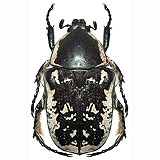 photo Rittner |
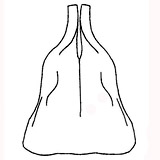 from Baraud |
 from Medvedev |
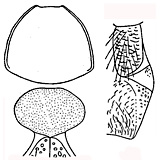 from Medvedev |
 photo D.Prunier |
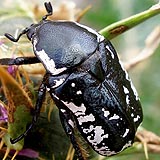 photo Sabatinelli |
 Distribution of Aethiessa species from Tauzin |
Aethiessa mesopotamica ssp. rugipennis Burmeister, 1842
Present in northern Syria, Eastern Anatolia, Caucasus and Iran.
 from Quatana (Syria), photo D.Prunier |
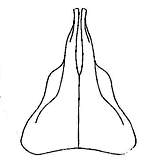 from Baraud |
 from Medvedev |
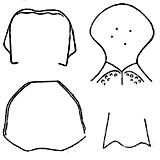 from Medvedev |
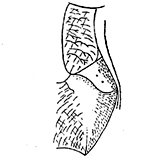 from Medvedev |
 Distribution of Aethiessa species from Tauzin |